Embarking on the quest for high-quality groceries often involves navigating a landscape where prices can range from budget-friendly to downright extravagant. In the realm of premium shopping experiences, we delve into the realm of opulence and exclusivity to explore the 10 most expensive grocery stores in the United States. From iconic establishments that have become synonymous with luxury to hidden gems catering to a discerning clientele, this compilation unveils the epitome of extravagance in the world of grocery shopping. Join us as we unravel the unique features, distinctive offerings, and the price tags that define these exclusive grocery destinations, offering a glimpse into a culinary world where top-tier products and lavish experiences come at a premium.
The List of the 10 Most Expensive Grocery Stores in the US
10. PCC Community Markets
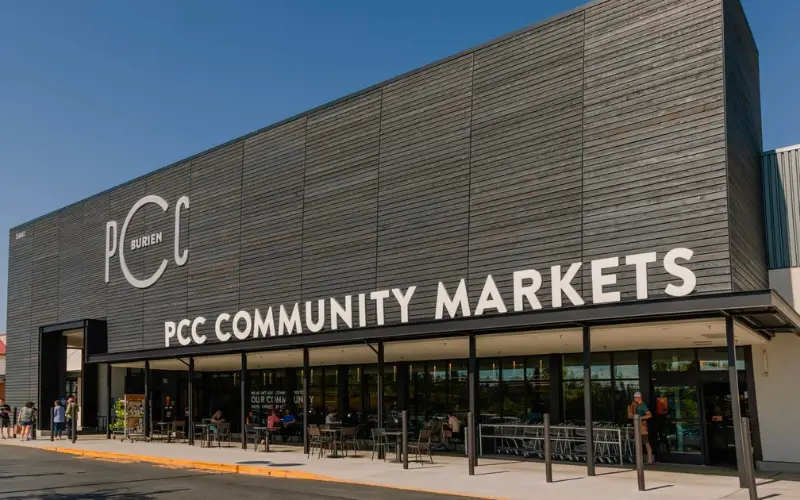
In 1953, a group of 15 families in Seattle joined forces to establish a food-buying club, laying the foundation for what would later become PCC Community Markets. Over the years, this cooperative has transformed into the largest consumer-owned food co-op in the United States, boasting a membership of more than 58,000 individuals.
From its inception, PCC has remained steadfast in its commitment to prioritizing fresh, seasonal, local, and sustainable produce. The co-op extends its offerings to include an array of high-quality products, from world-class meat, seafood, dairy items, wine, and beer to an enticing deli selection. PCC goes beyond being just a grocery store, organizing cooking classes featuring renowned food personalities such as cookbook authors, professional chefs, and local restaurateurs.
As you stroll through PCC, vibrant displays of fresh produce greet you, each item sourced locally or certified organic. Seasonal delights like chanterelle mushrooms occasionally grace the shelves, albeit at a premium price. Every product tag is accompanied by vivid descriptions, providing customers with detailed information about the items they are purchasing. PCC elevates the shopping experience by labeling cheeses with specifics about the types of milk and enzymes used in their preparation, along with thoughtful wine pairing recommendations.
9. Gelson’s
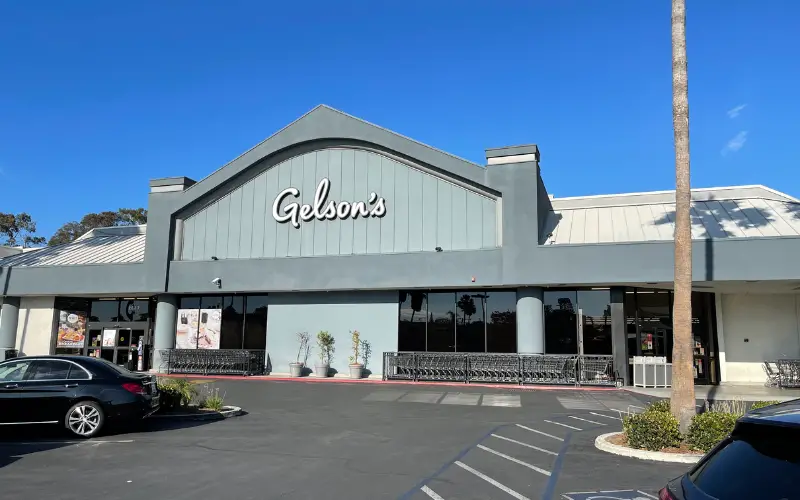
When one thinks of a “luxury grocery store” in Southern California, Gelson’s is among the first names that come to mind. With nearly all of its 27 locations situated in affluent neighborhoods, Gelson’s offers an elevated shopping experience characterized by sleek modern design, spacious aisles, and distinctive features not commonly found in conventional grocery stores. These amenities include pressed juice bar kiosks, a build-your-own-pizza station featuring Wolfgang Puck’s creations, a coffee bar, and a bakery showcasing an array of Parisian cakes, cookies, and pastries. Going beyond conventional offerings, Gelson’s even boasts its own line of CBD-infused beauty products.
However, the luxurious lifestyle in Southern California often comes at a price. While Gelson’s remains popular with its customers, scoring an impressive 87 out of 100 for customer satisfaction, it falls short in terms of price competitiveness, earning the lowest possible score in this category according to GOBankingRates. For instance, as of March 2023, the average gallon of milk, priced around $4.10 according to the U.S. Bureau of Labor Statistics, can cost over $7 at Gelson’s. While the store may be an excellent choice for specialty items, it might be prudent to explore other options for everyday staples.
8. Giant Eagle
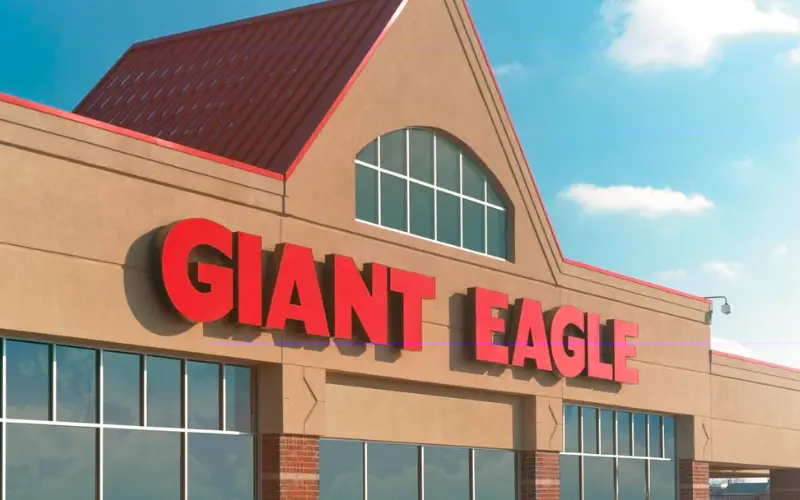
Founded in 1936 by five families, Giant Eagle has weathered the challenges of World War II and the Great Depression, steadily growing into a formidable grocery business with over 450 stores, establishing itself as a prominent player in the Midwest. Recognized for its pioneering spirit, Giant Eagle has been at the forefront of grocery store innovation, being among the first to computerize buying systems, adopt 24-hour operations, and introduce “from scratch” baked goods.
Acknowledged for its ingenuity, the company earned a spot on Progressive Grocer’s list of “Top 10 Regional Operators to Watch” in 2022, lauded for innovations like its mobile app and extensive pharmaceutical library. Despite offering impressive features such as wine and beer tastings, restaurant-quality prepared foods, and an extensive product selection, shopping at Giant Eagle often comes with a substantial price tag, consistently ranking higher in prices compared to other grocery stores in the region. Buyers should exercise caution and weigh the benefits against the cost.
7. Publix
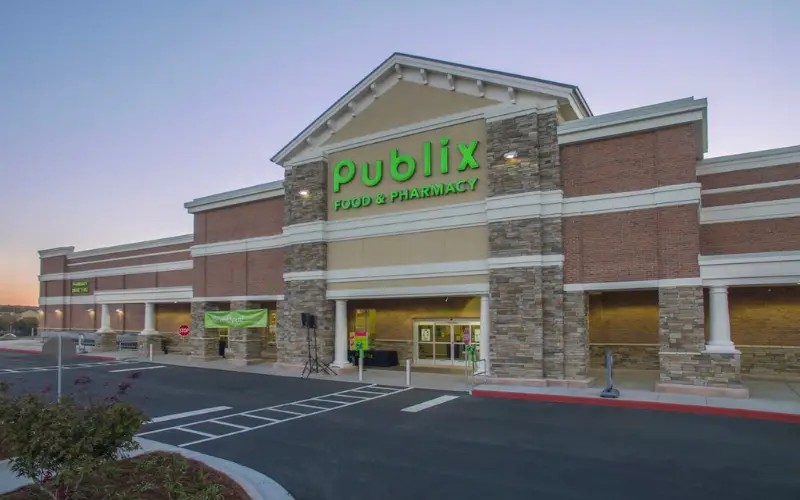
In Florida, you’ll encounter Publix, the largest employee-owned company in the United States, founded by George W. Jenkins in 1930. Boasting over 1,200 supermarkets across the South, Publix has garnered acclaim, securing the 4th spot on Forbes’ Halo 100 List in 2022, a testament to its commitment to providing exceptional customer experiences.
The moment you step into a Publix supermarket, you’ll be greeted by remarkably helpful associates and find high-quality products, emphasizing the company’s dedication to treating customers like royalty, as stated by Maria Brous, Publix Director of Communications. However, this positive reputation comes at a cost, as Publix is notorious for significantly higher grocery prices than its counterparts. Despite inflation affecting prices nationwide, Publix charges more than double the cost of eggs and 50% more for milk compared to other Florida stores, leading shoppers to express their discontent on social media.
While Publix excels in customer service, the question remains: is it worth paying double for eggs? The decision is yours to make.
6. Wegmans
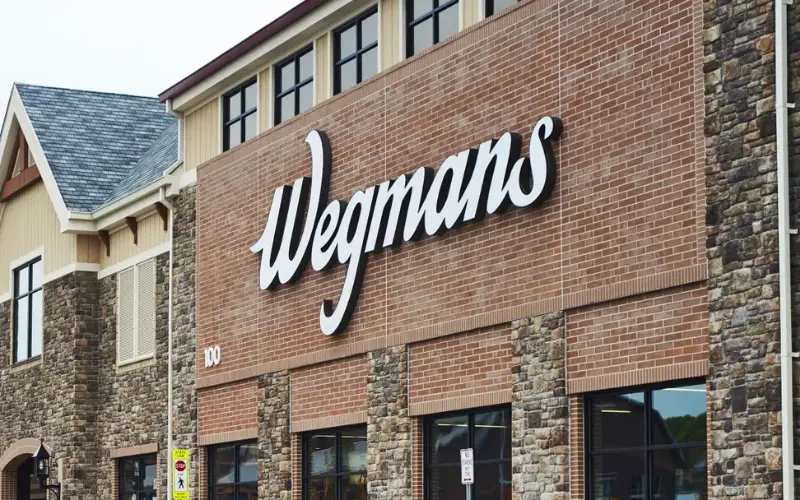
In the Northeastern United States, you’ll discover one of the 110 Wegmans stores, making it among the largest private companies in the country with an impressive $12 billion in annual sales.
Despite its higher prices, Wegmans enjoys a devoted following, offering customers an exceptional shopping experience with top-quality gourmet prepared foods, a delightful ambiance, and unparalleled customer service. Stepping into Wegmans feels like entering a meticulously maintained microcosm, featuring various “stores” such as a pizzeria, deli, bakery, French patisserie, caterer, butcher, cheese shop, sushi counter, pharmacy, florist, coffee shop, restaurants, and, of course, groceries. The cheese shop alone boasts around 300 types, while the expansive olive bar allows for the perfect snack selection.
Wegmans’ commitment to diversity is evident in its large foreign section, providing access to niche treats from around the world. For customers seeking specific flowers, in-house florists stand ready to craft the arrangement of their dreams. Additionally, Wegmans offers DIY nut butter machines, ensuring optimal consistency for nut butter enthusiasts. According to a study by Engagement Labs, Wegmans secured the second spot as the most-loved brand offline in 2017, trailing only behind Disney World. Clearly, many Wegmans customers would argue that the higher price tag is well justified.
5. Harris Teeter
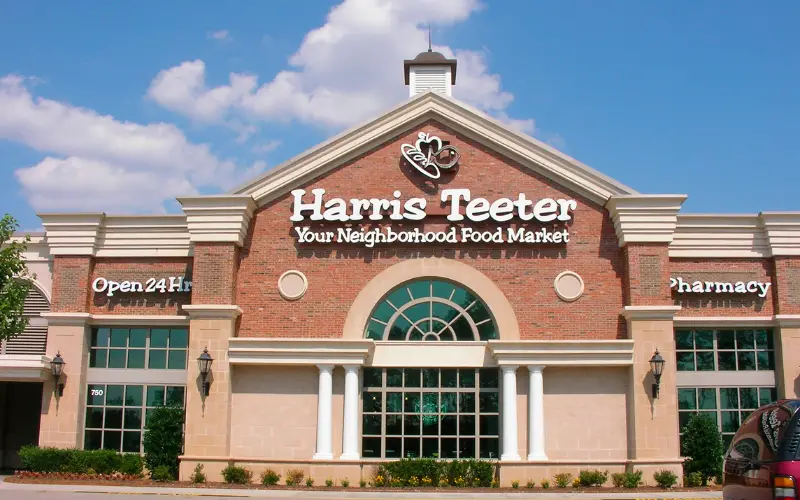
If you’re situated in the Southeastern USA, you might be fortunate to have a nearby Harris Teeter. With over 250 stores across eight states, it consistently earns recognition as one of the nation’s most beloved supermarkets. Despite its unique name, derived from individuals named Harris and Teeter, the grocery chain is renowned for offering top-notch products and services.
The company takes pride in its extensive array of high-quality meats and seafood, a premium bakery and deli, as well as a dedicated floral section. Additionally, Harris Teeter provides a variety of prepared foods, such as pizza, sushi, and a salad bar. Venturing deeper into the store reveals an extensive selection of wines and other alcoholic beverages. Notably, the supermarket boasts a charming mascot named Harry the Happy Dragon.
While the brand enjoys widespread popularity and is often considered a hidden gem exclusive to the South, it does come with a considerable price tag.
4. The Fresh Market
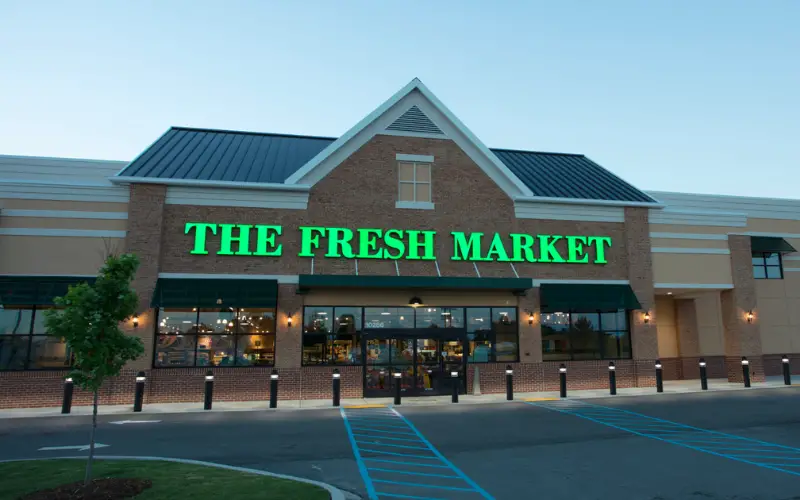
The Fresh Market stands out as a specialty grocery store dedicated to capturing the allure of a European-style open market in the American suburbs. Founded by Ray and Beverly Berry in the quaint town of Greensboro, North Carolina, this boutique grocery aimed to instill a farmer’s market ambiance right from its inception. Its initial offerings included an in-store bakery, locally sourced produce, floral stands, and a butcher shop.
Fast forward to today, and The Fresh Market has expanded its presence to over 150 locations across 22 states. Stepping into the store, customers are welcomed by classical music playing throughout the day, as well as a delightful array of freshly cut flower arrangements, exotic cheeses, homemade croissants, and private-label products sourced globally. The ambiance is unmistakably reminiscent of a European farmer’s market. Navigating the store reveals an extensive selection of olive oils, bins filled with dried fruit and nuts, and even an olive bar. For those seeking an extra touch, there’s a self-grind nut butter station.
For shoppers who find themselves daydreaming about the rustic charm of the Spanish countryside, The Fresh Market proves to be the ideal grocery destination. Each visit to the store feels like a mini vacation, a sensory and budget-friendly escape.
3. Acme Markets
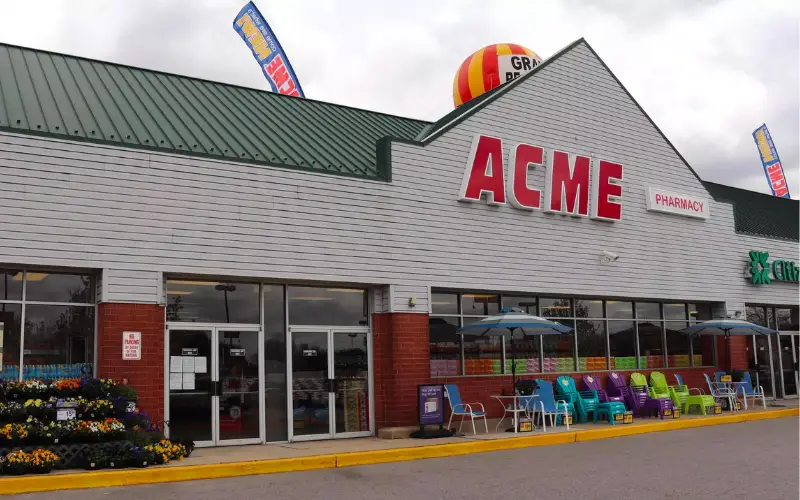
If you call the Mid-Atlantic home, you’re likely familiar with the steep costs associated with Acme Markets, a well-known chain in Pennsylvania, New Jersey, and Delaware. According to Consumer Checkbook, the prices of groceries at Acme exceed those of other chains by an average of 12% in 2022. Regrettably, despite being among the most expensive supermarkets in the region, reports suggest that Acme struggles with maintaining high product quality.
While Acme attributes its elevated prices to the provision of high-quality products and friendly service, studies present a different perspective. According to a survey conducted by Consumer Reports, Acme ranks among the lowest supermarkets in the country concerning factors such as quality and convenience. The story goes beyond surface explanations.
One contributing factor to Acme’s high prices is the unionization of its employees, leading to superior benefits, higher pay, and improved working conditions. However, as is common with unionized businesses, these additional costs are transferred to the consumer. Additionally, the presence of an on-site pharmacy department at Acme might be a significant contributor to the overall high costs incurred by the store.
While it’s commendable that Acme prioritizes the well-being of its employees, the consensus is that the elevated prices are not justified when considering the quality of groceries and service provided.
2. Whole Foods Market
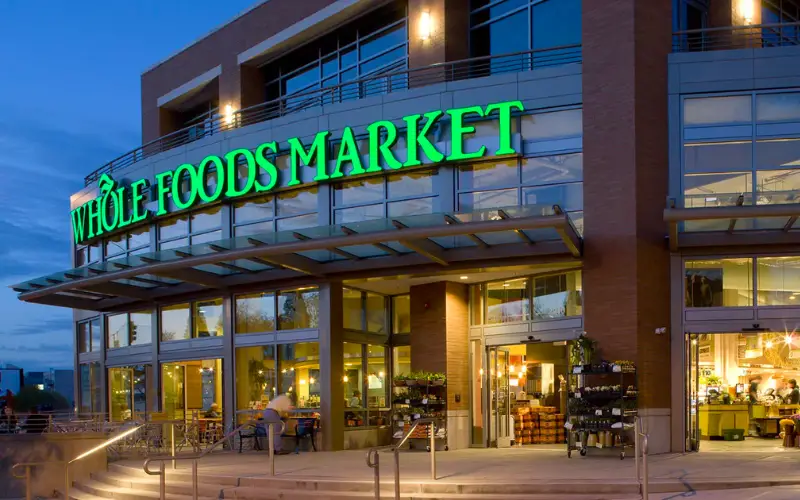
Whole Foods? More like your entire salary. Despite being one of the priciest grocery store chains, this popular establishment maintains immense popularity and boasts a substantial base of devoted shoppers. According to The Grocery Store Guy, groceries at Whole Foods are priced anywhere from 10 to 20% higher than those at the average grocery store. In fact, the store faced an $800,000 fine for intentionally misleading customers, as reported by MarketWatch.
So, what’s the deal with Whole Foods’ steep prices? Think of it as the Starbucks of grocery stores. The company recognizes that its target demographic is willing to pay a premium for a superior ambiance, a distinctive atmosphere, and top-notch customer service. In contrast to other stores, like Walmart, where long lines and limited assistance are the norm, Whole Foods offers a more luxurious and comfortable shopping experience, thanks to its various specialty departments.
Whole Foods takes pride in its rigorous standards concerning health, environmental impact, and animal welfare for the products on its shelves. The store prohibits several ingredients, including preservatives, high-fructose corn syrup, hydrogenated fats, and more. In the realms of meat and dairy, Whole Foods guarantees the absence of added growth hormones and antibiotics in the feed.
While it may feel like you’re parting with a limb to cover your weekly groceries, there’s a rationale behind Whole Foods’ loyal following—it’s the result of the store’s commitment to a high-quality, ethical shopping experience.
1. Erewhon Market
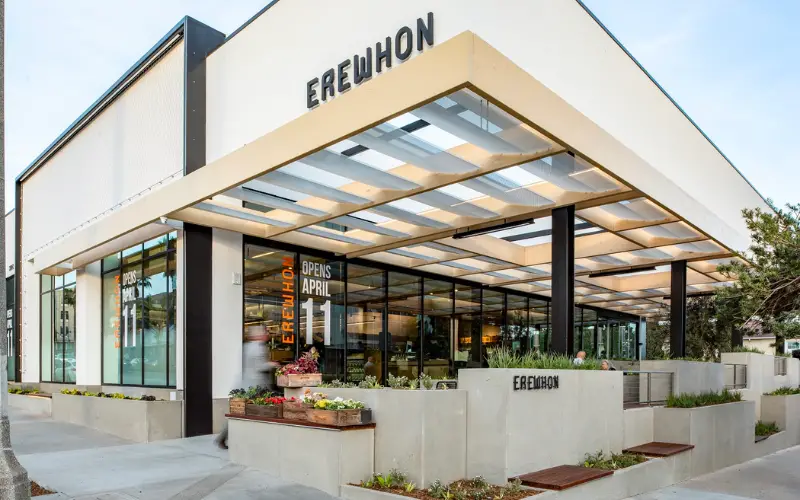
This destination on the upscale grocery store circuit has garnered attention on social media due to its popularity among celebrities such as Miley Cyrus, Kim Kardashian, Jake Gyllenhaal, Demi Lovato, Leonardo DiCaprio, G-Eazy, and others. So frequented is this establishment by Hollywood’s elite that paparazzi routinely stake out its locations in hopes of capturing the next big celebrity grabbing essentials. This celebrity patronage serves as a clear indicator of Erewhon’s pricing — it’s a shopping experience that often requires a Hollywood-sized budget. A fully loaded cart at Erewhon is not just a shopping spree; it’s a status symbol, often ringing up at over $1,000.
Despite its modest beginnings in 1966 with a small stall, Erewhon experienced significant growth in the subsequent years. Initially positioning itself as “the first store of its kind in America,” it focused on selling organic and macrobiotic food in Boston before relocating to Los Angeles three years later. Presently, with six additional stores strategically located in LA’s most upscale neighborhoods, Erewhon articulates its mission: “At Erewhon, we believe that nutrition is the key to a radiant lifestyle. Through our markets, we strive to offer exceptional organic products that promote wise decision-making and foster healthier communities.”
However, wise decision-making at Erewhon comes at a price. A single probiotic smoothie, complete with all the trimmings, may set you back a whopping $30. Fancy a bottle of chocolate almond milk? That will be $9. Even a small pack of dental floss comes with a $10 price tag.
Conclusion
As we conclude our exploration of the 10 most expensive grocery stores in the United States, it becomes evident that the world of upscale grocery shopping is a diverse landscape, where indulgence meets discerning tastes. These elite establishments showcase a commitment to quality, exclusivity, and a unique shopping experience that transcends the ordinary. While the price tags may seem steep, the allure lies in the exceptional products, curated selections, and personalized service offered by these premium grocery stores. Whether it’s the opulence of renowned chains or the intimacy of boutique markets, each of these establishments has carved out a niche catering to a clientele seeking nothing short of the extraordinary. As we bid adieu to this journey through extravagance, it’s clear that for those willing to invest, the world of upscale grocery shopping is a realm where culinary dreams and premium tastes converge.

